 Petzlover
Petzlover Giant Schnauzer is originated from Germany but Galgo Espanol is originated from Spain. Both Giant Schnauzer and Galgo Espanol are having almost same height. Giant Schnauzer may weigh 19 kg / 42 pounds more than Galgo Espanol. Giant Schnauzer may live 3 years less than Galgo Espanol. Both Giant Schnauzer and Galgo Espanol has same litter size. Giant Schnauzer requires Moderate Maintenance. But Galgo Espanol requires Low Maintenance
Giant Schnauzer is originated from Germany but Galgo Espanol is originated from Spain. Both Giant Schnauzer and Galgo Espanol are having almost same height. Giant Schnauzer may weigh 19 kg / 42 pounds more than Galgo Espanol. Giant Schnauzer may live 3 years less than Galgo Espanol. Both Giant Schnauzer and Galgo Espanol has same litter size. Giant Schnauzer requires Moderate Maintenance. But Galgo Espanol requires Low Maintenance
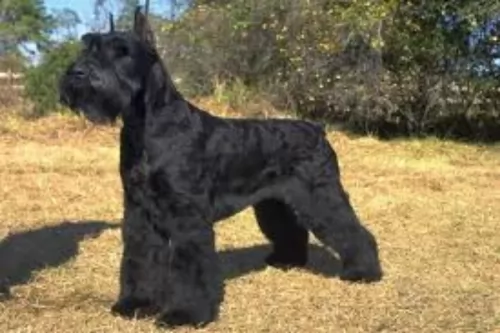 As a working dog breed, the Giant Schnauzer, known also as the Riesenschnauzer, hails from Germany.
As a working dog breed, the Giant Schnauzer, known also as the Riesenschnauzer, hails from Germany.
It is believed that the first Giant Schnauzers emerged in Bavaria in the 17th century already. It is the largest of the 3 Schnauzer dogs – Miniature, Standard and Giant. There are quite a few breeds which have been used in its development – Bouvier des Flandres, Great Dane and the German Pinscher among other.
The dog was bred to work on farms and also used as a military dog during the World Wars.
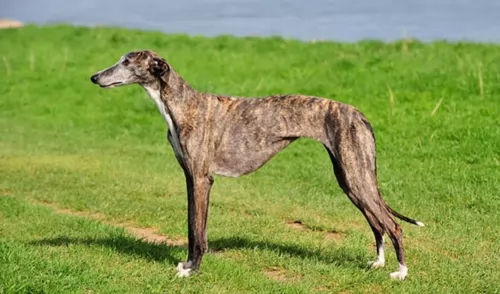 Galgo Espanol means Spanish with galgo meaning greyhound, thus a Spanish Greyhound. This breed is ancient with their roots in perhaps the English greyhound and others in the sighthound family. They are much like the greyhound in that they are laid back, calm, gentle and quiet, unless they are competing on the local track. Like the greyhound they are shy and reserved; great with kids and other pets. And of course, they love cats.
Galgo Espanol means Spanish with galgo meaning greyhound, thus a Spanish Greyhound. This breed is ancient with their roots in perhaps the English greyhound and others in the sighthound family. They are much like the greyhound in that they are laid back, calm, gentle and quiet, unless they are competing on the local track. Like the greyhound they are shy and reserved; great with kids and other pets. And of course, they love cats.
There are dogs like the Galgo referred to in writing by the ancient Celts and Romans. One author, Arrian, had his own Galgos and used them when hunting. The breed flourished in the second half of the Middle Ages in Spain and well into the 8th century. When the Christians regained control of the Iberian Peninsula, they did away with the hunter old forms of hunting and introduced a new form with hounds that made the Galgo the pride of the aristocracy and not in the homes of the ordinary people. Arrian claim to two types of dogs, the smooth and rough coated.
Muslim and Chrisitan Kings kept Galgo Espanols. In all probability the Saluke and Galgo were crossbred at this time. It was illegal to kill a Galgo and in 1081, the Mayor of Cartuario of Slonza left his Galgo in his will to Diego Citid. Dogs seen in painting from the 12th century look just like dogs of this breed who can be seen today.
It is believed that when the Galgo was developed, it was in the midsection of Spain or the Castillian plains. They ruled the interior of the country while the bloodhound ruled the exterior. The 18th and 19th centuries saw very little change in the breed. However, in the 20th century, there was cross breeding with the English greyhound that produced a leaner, faster and powerful track racing dog. The results was a faster dog without the long distance stamina of the pure Galgo. For this reason, the breeders returned to breeding the pure professional racing dog.
The sport of racing the Galgo earns Spain around sixty million dollars per year. They train anywhere from three to four thousand of the Galgos every year for Open Field Coursing Championships. Still, there no longer is any cross breeding between the Greyhound and the Galgo. The current coursing programs feature a hare that is much hardier and difficult to pursue so the stamina of the old Galgo Espanol is desired. In Castile, where these games are played, the landscape is open with large fields that requires that the hare travels far greater distances. This means that the stamina of the original Galgo Espanol is needed.
When not racing the Galgos have become great house pets. They have a reputation as gentle dogs that are docile and quiet, with good health. This reputation is well earned. They are also successful show dogs in Europe much more than the states. This is perhaps because they are really rare outside of Spain. They are not recognized by the United Kennel Club nor the American Kennel Club.
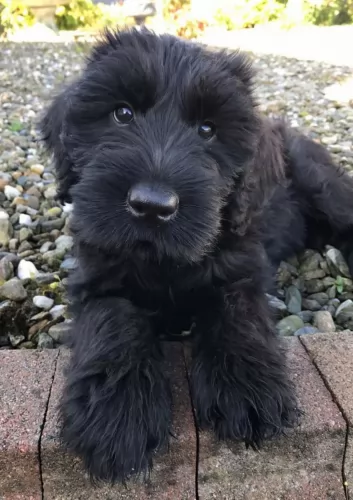 With a thick, medium length double coat to protect him from the weather, the Giant Schnauzer’s coat is essentially wiry and hard and in solid black or in a greyish salt and pepper color.
With a thick, medium length double coat to protect him from the weather, the Giant Schnauzer’s coat is essentially wiry and hard and in solid black or in a greyish salt and pepper color.
The dogs have always traditionally had their ears and tails docked at the 2nd or 3rd joint to set them apart in looks, but these days both the ears and tail are left.
The tail is always held high. He has dark eyes. Like all Schnauzers, they have that distinct beard and eyebrows. The dog is large and well built and stands at 60 to 70cm in height and weighs anything between 25 and 48kg.
Intelligent, strong willed and energetic, the Giant Schnauzer is actually a quiet dog who doesn’t respond too well to strangers, being reserved around them.
He has a natural guarding and territorial instinct. When he is trained and socialized he makes a wonderful pet, responding well to a firm, consistent owner.
He loves his human family, and as a stable, reliable kind of dog, whether you’ve got children in the home, pets or elderly people, you can rely on your Giant Schnauzer to be a dependable, gentle pet at all the right times, being playful and energetic at other times.
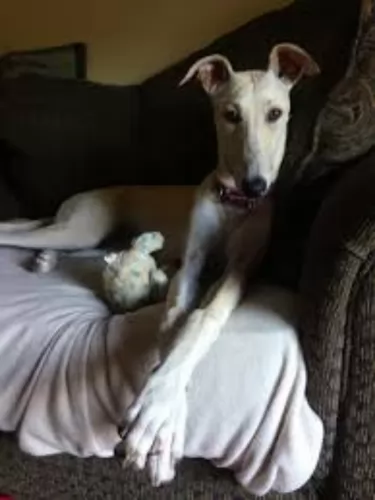 Obviously the Galgos looks a lot like the Greyhound, but in some very important ways they are very different. The rear of the Galgos is higher than the front and their muscle are flatter. They are built for endurance while the Greyhound is built for speed. The Galgos is a lighter, smaller dog with larger ear on a long head. They have long tails and their chests are not deep like the Greyhounds.
Obviously the Galgos looks a lot like the Greyhound, but in some very important ways they are very different. The rear of the Galgos is higher than the front and their muscle are flatter. They are built for endurance while the Greyhound is built for speed. The Galgos is a lighter, smaller dog with larger ear on a long head. They have long tails and their chests are not deep like the Greyhounds.
The Galgo comes in smooth and rough coats and a variety of colors. The rough coat protects dogs that are in climates colder than the ones in Spain and also keeps them from injuring their skin while running. The colors include brindle, black, golden, toasted, cinnamon, yellow, red, white, white with patches, or any color as long as they have a white forehead and muzzle.
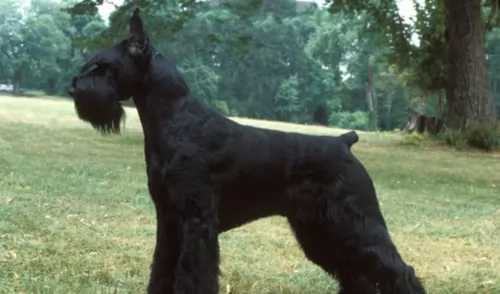 The Giant Schnauzer has many excellent characteristics which make it such a great pet. He is composed, alert, intelligent, loving and loyal to his human family.
The Giant Schnauzer has many excellent characteristics which make it such a great pet. He is composed, alert, intelligent, loving and loyal to his human family.
He is also playful, being happiest when roped into everything going on in the family. He has a solid, balanced nature, is robust and hypoallergenic.
He is powerful and needs a good dose of exercise and will love to join you on your cycle- and hiking trips. Good with children and pets in the home, this is a dog breed that will make a splendid, reliable pet.
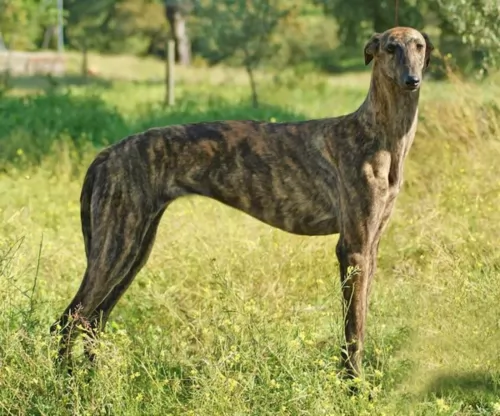 They are good with children, but you need to be careful no one gets knocked down or hurt.
They are good with children, but you need to be careful no one gets knocked down or hurt.
Stamina for running and a good record in lure coursing.
Though they can be couch potatoes like greyhounds they are better off with a fenced yard and not an apartment.
They are smart and can learn anything you want to teach them if you can keep their attention.
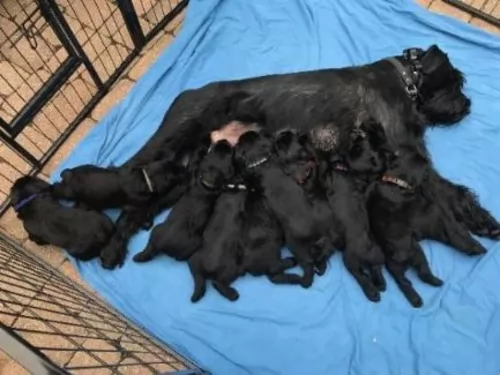 A healthy Schnauzer can reach 10 – 12 years of age, but even so, they are a dog breed prone to high rates of hip- and elbow dysplasia, hereditary eye disease and thyroid disease.
A healthy Schnauzer can reach 10 – 12 years of age, but even so, they are a dog breed prone to high rates of hip- and elbow dysplasia, hereditary eye disease and thyroid disease.
Blood-clotting diseases and epilepsy are also concerns with Giant Schnauzers as well as bloat. As with all deep-chested breeds, Giant Schnauzers are more at risk with this gastrointestinal syndrome known as bloat and which can be life threatening.
It is your right to ask the breeder about the medical history of your puppy’s parents.
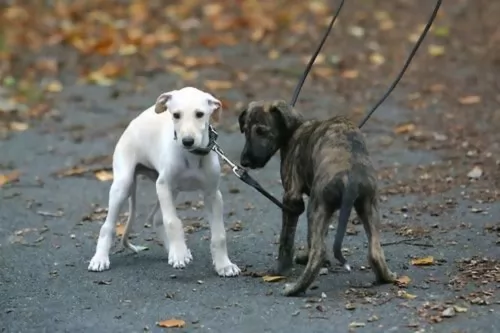 Being a large dog, the Galgo Espanol would normally face a high probability of hip dysplasia. Fortunately for the breed this is not true. In this respect their lightness of weight, their history as a working dog and their anatomy have protected them from it. They are however susceptible to other issues.
Being a large dog, the Galgo Espanol would normally face a high probability of hip dysplasia. Fortunately for the breed this is not true. In this respect their lightness of weight, their history as a working dog and their anatomy have protected them from it. They are however susceptible to other issues.
Malignant tumors that quickly spread throughout the body. Life threatening.
As a sighthound, the Galgo Espanol is prone to have issues anytime with anesthetics. They don’t metabolize the anesthetics like other dogs do. They will take longer to revive, and they are susceptible to hypothermia while under an aesthetic.
While running, they are prone to injuries
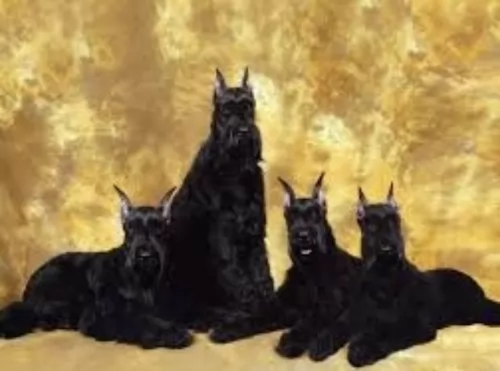 He is a particularly low shedding dog and so brushing him twice a week will suffice. He loves the closeness with his human family during these grooming sessions.
He is a particularly low shedding dog and so brushing him twice a week will suffice. He loves the closeness with his human family during these grooming sessions.
If you don’t know how to groom yourself, the Giant Schnauzers coat will require hand-stripping or clipping. If you want to keep your dog with that typical Schnauzer look, a visit to a professional groomer will be required as they will also tidy the hair around each paw as well.
Now that the ears are no longer cropped, he has fairly short floppy ears and it will be necessary to ensure that dampness, ear wax and dirt don’t build up to cause ear infections.
The teeth must also be brushed 2 or 3 times a week otherwise plaque buildup can cause dental disease as well as lead to other more serious diseases such as kidney- and heart disease.
If you’re a new dog owner, it can be hard to know which dog food to buy and which ingredients to look out for. Nutrition is of vital importance, and bad ingredients can make your dog sick and shorten his life.
A mix of the best commercially manufactured kibble mixed with home-made food full of the right balance of vitamins and minerals will be important as well as including some raw meat into the diet.
If in any kind of doubt about how to feed a large, energetic dog breed like this Giant Schnauzer, speak to your vet.
As a big, energetic dog, the Giant Schnauzer needs to live on a property where there is a garden. He will be requiring some hectic exercise every day.
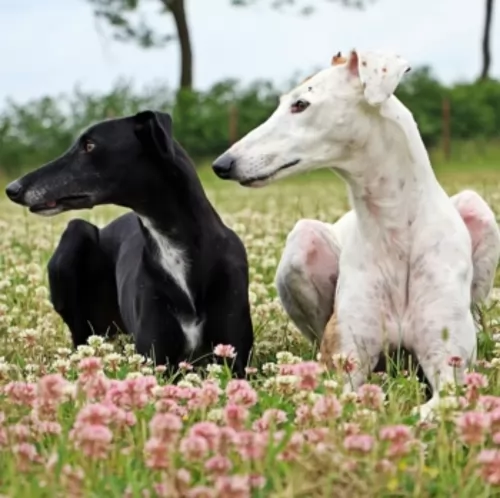 Feed your puppy a high quality dry food made for large breed dogs. Feed 3 meals a day 2.5 to 3 cups total for the day.
Feed your puppy a high quality dry food made for large breed dogs. Feed 3 meals a day 2.5 to 3 cups total for the day.
Feed your adult Galgo a high quality dry food made for large breed dogs. Feed 2 meals a day but don’t overfeed Give 4-5 cups total for the day.
They have amazing stamina and good speed. Generally good health as a breed.
He can be a couch potato indoors and runs forever outdoors. He does need daily exercise and bedrest both. The best would be if you could sprint him every day or have a small yard he can play in. They excel of course at agility and lure coursing. Keep them on a leash because if they run you will never catch them. The American Sighthound Field Association presents lure coursing events that they are eligible for. They have exceled at show competition in Europe but are not well known in the U.S.